Topic of the Month
Successful deployment of six CubeSats delivered by KOUNOTORI6
On January 16, 2017, from 6:10 p.m. to 7:50 p.m. (JST), during four deployment opportunities, a total of six microsatellites were successfully deployed into orbit from the Japanese Experiment Module (“Kibo”). The series of deployments was conducted in the following order:
- First: three 1U-sized CubeSats, each developed by the University of Tsukuba (ITF-2), Waseda University (WASEDA-SAT3), and Nakashimata Engineering Works, Ltd./Tohoku University (FREEDOM)
- Second: A 3U-sized CubeSat by the University of Tokyo (EGG)
- Third: A 2U-sized CubeSat co-developed by Kyushu Institute of Technology and Nanyang Technological University of Singapore (AOBA-Velox III)
- Last: A 3U-sized CubeSat, TuPOD (containing two microsatellites called TubeSats) co-developed by JAMSS/GAUSS/Tancred elementary school and INPE (Brazil)/OSN (U.S.)
For the series of deployments, an upgraded JEM Small Satellite Orbital Deployer (J-SSOD) featuring deployment capacity of up to 12 microsatellites (12U) at one time was used for the first time. Given the dramatically increased demand for CubeSat deployment in the past few years, JAXA has upgraded the deployer to meet that demand.
At the Tsukuba Space Center, the personnel involved in development of each CubeSat monitored and applauded the successful deployment. In Brazil, others involved in development monitored the deployment of TuPOD live via the Internet.
JAXA will continue to offer CubeSat deployment opportunities using the mechanisms of Kibo.
Exchange of ISS Batteries
Removal and replacement of the ISS battery Orbital Replacement Units (ORUs) delivered by KOUNOTORI6 were conducted from December 31 – January 14, 2017.
There are 48 sets of nickel-hydrogen batteries currently used on the ISS, but given the approaching end of their service life, a new type of Japanese lithium-ion battery cell was adopted as the replacement. The new battery ORUs will provide sufficient power with only 24 battery ORUs. This time, nine of the 12 battery sets installed on the S4 truss were replaced by six new battery sets.
The NASA ground team conducted removal and replacement operations by maneuvering the ISS robotic arm (Space Station Remote Manipulator System or SSRMS), followed by two Extravehicular Activities (EVAs) conducted by Astronauts Shane Kimbrough and Peggy Whitson on January 6, and by Shane Kimbrough and Thomas Pesquet on January 13.
An additional 18 battery ORUs will be delivered by the future HTV 7-9 missions to sustain prolonged operations of the ISS.
Kibo This Month
Preparation for the first combustion experiment in Kibo
Preparations are ongoing for the group combustion experiment, for which Astronaut Onishi conducted assembly and verification while onboard the ISS.
The Group Combustion Experiment Module (GCEM) is the device used to conduct the first Japanese combustion experiment in space on investigating the combustion mechanism of fuel droplet groups (gathering of fuel particles).
When conducting combustion experiments on the ground, strong natural convection occurs due to the difference in temperature between the high-temperature flame and ambient air. On the ISS, detailed observation of combustion itself is possible because such convection does not occur in a microgravity environment.
On January 16, in cooperation with the ground controllers, the air tightness and supply lines of nitrogen gas and air were verified in the Multi-purpose Small Payload Rack (MSPR) in which the Chamber for Combustion Experiment (CCE) was installed aiming to begin the experiment in mid-February.
Technological demonstration of the real-time dosimeter begins
On December 15, 2016, a real-time radiation monitor called the “Position Sensitive Tissue Equivalent Proportional Chamber (PS-TEPC)” was installed in the Kibo module and activated by an onboard crew member.
System checkout of PS-TEPC was performed until December 28, and then the technological demonstration began.
PS-TEPC is a compact, high-precision inboard dosimeter that enables real-time measurement, and which will compare its data with the data of existing dosimeters.
Immunization research for the health of onboard astronauts
JAXA’s medical experiment called “Multi-omics analysis of human-microbial metabolic cross-talk in the space ecosystem” (Multi Omics) is ongoing.
This experiment evaluates the influence on immune disorders by investigating changes in the intestinal environment such as intestinal flora and the intestinal metabolism of astronauts onboard the ISS.
ISS This Month
Maintenance for the Carbon Dioxide Removal Assembly (CDRA)
On January 23, the removal and replacement operations for the Orbital Replacement Units (ORUs) of the Carbon Dioxide Removal Assembly (CDRA) delivered on KOUNOTORI6 were conducted.
Onboard crew removed the Air Selector Valve (ASV) from the CDRA and installed a new CDRA valve. This new valve was developed to improve its operational lifetime. The removed valve was stowed as a spare.
JAXA Astronauts This Month
Below we introduce the current brief status of JAXA Astronauts.
- Norishige Kanai
Kanai continues training for the upcoming ISS Expedition 54/55. He underwent training for EVA and robotic operations at the NASA Johnson Space Center.
Kanai also visited the Gagarin Cosmonaut Training Center (GCTC) in Russia for training on how to support EVA by Russian crew, simulate Soyuz spacecraft operations, and perform fit checking of his Sokol spacesuit. - Koichi Wakata
Wakata underwent flight piloting training in several areas of Japan (to maintain various skills as an astronaut) while being very busy as JAXA ISS Program Manager. - Soichi Noguchi, Satoshi Furukawa, and Akihiko Hoshide
They underwent training for Extravehicular Activities (EVAs) at the NASA Johnson Space Center (JSC). - Takuya Onishi
Onishi underwent a set of debriefings on health and psychological management, space food, medical and other experiments at the TKSC. He also visited Star City in Russia for a debriefing and attended a welcome home ceremony. - Kimiya Yui
Yui is currently on duty at the TKSC. In February, he will undergo training for EVA at the NASA Johnson Space Center.
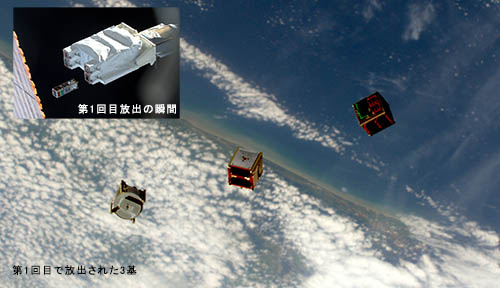
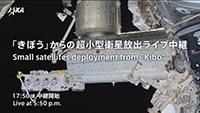
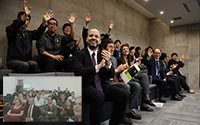
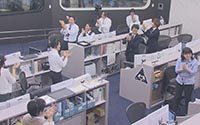
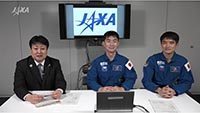
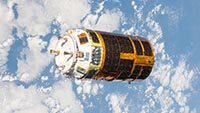
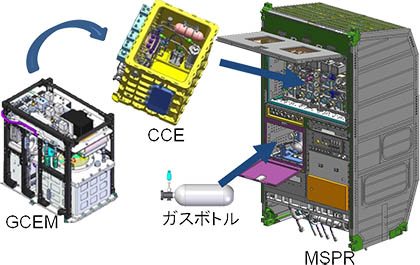
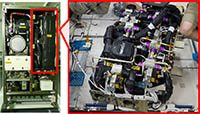
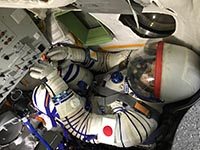
Comments are closed.